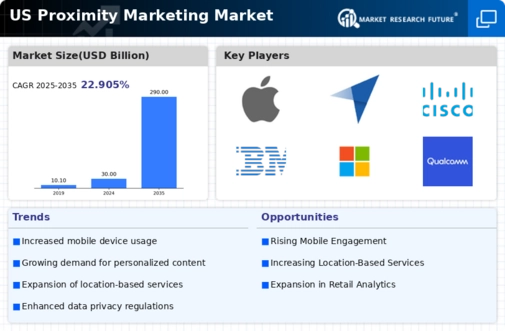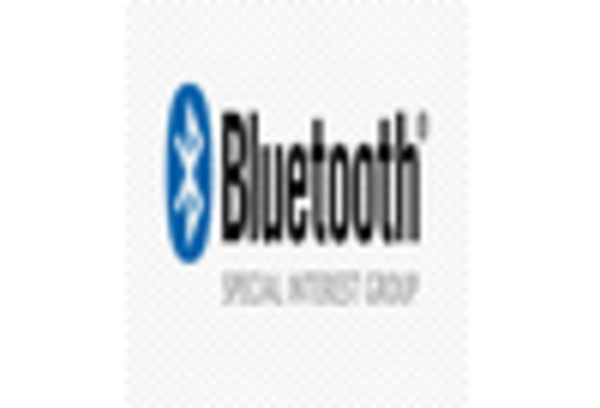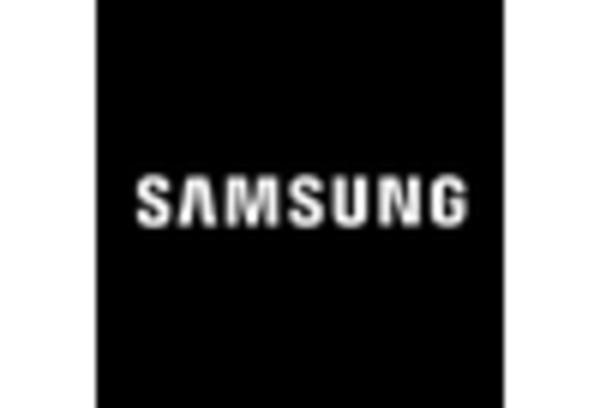Growth of Mobile Device Usage
The proliferation of mobile devices is a significant driver of the proximity marketing market. With over 80% of the US population owning smartphones, businesses are leveraging these devices to engage consumers in real-time. Mobile applications equipped with proximity marketing capabilities enable brands to send location-based offers and notifications directly to users. This trend is particularly relevant in retail, where studies indicate that 70% of consumers are more likely to make a purchase when receiving location-specific promotions. As mobile technology continues to evolve, the proximity marketing market is poised for further growth, as companies seek to capitalize on the increasing reliance on mobile devices.
Emergence of Smart Retail Environments
The rise of smart retail environments is reshaping the landscape of the proximity marketing market. Retailers are increasingly adopting Internet of Things (IoT) technologies to create interconnected shopping experiences. This integration allows for real-time data collection and analysis, enabling businesses to understand consumer behavior better. In the US, the smart retail market is projected to reach $30 billion by 2026, indicating a robust opportunity for proximity marketing strategies. As retailers implement smart technologies, they can enhance customer experiences through personalized offers and seamless interactions, driving growth in the proximity marketing market.
Increased Focus on Customer Experience
In the current competitive landscape, businesses are placing a heightened emphasis on customer experience, which is significantly influencing the proximity marketing market. Companies are recognizing that enhancing customer satisfaction can lead to increased loyalty and repeat business. Proximity marketing strategies, such as location-based promotions and personalized messaging, are being utilized to create more engaging shopping experiences. Research suggests that improving customer experience can boost revenue by up to 15%. As organizations prioritize customer-centric approaches, the proximity marketing market is likely to see substantial growth, as brands seek innovative ways to connect with their audience.
Rising Demand for Personalized Marketing
The proximity marketing market is experiencing a notable surge in demand for personalized marketing strategies. Businesses are increasingly recognizing the value of tailoring their marketing efforts to individual consumer preferences. This trend is driven by advancements in data analytics and consumer behavior insights, which allow companies to deliver targeted messages based on location and past interactions. In the US, it is estimated that personalized marketing can enhance customer engagement by up to 20%. As brands strive to create more meaningful connections with their audience, the proximity marketing market is likely to expand, with companies investing in technologies that facilitate personalized experiences.
Advancements in Location-Based Technologies
Technological advancements in location-based services are driving innovation within the proximity marketing market. The development of GPS, Bluetooth, and Wi-Fi technologies has enabled businesses to accurately target consumers based on their physical location. In the US, the location-based services market is expected to grow at a CAGR of 25% over the next five years. This growth presents significant opportunities for proximity marketing, as companies can leverage these technologies to deliver timely and relevant offers to consumers. As location-based technologies continue to evolve, the proximity marketing market is likely to expand, providing brands with new avenues for engagement.

















Leave a Comment